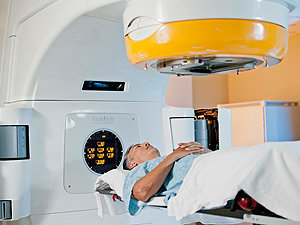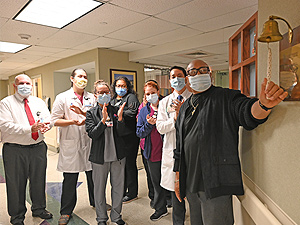Prostate Cancer Symptoms, Tests & Diagnosis
Prostate Cancer Symptoms, Tests & Diagnosis
Prostate cancer often does not cause symptoms for many years. And some symptoms are similar to those caused by other health conditions. When symptoms do occur, they may include urinary problems such as:
- Not being able to urinate
- Having a hard time starting or stopping the urine flow
- Needing to urinate often, especially at night
- Weak flow of urine
- Urine flow that starts and stops
- Pain or burning during urination
Other symptoms may include:
- Difficulty having an erection
- Blood in the urine or semen
- Frequent pain in the lower back, hips or upper thighs
Most often, these are symptoms of noncancerous conditions. But it’s important to check with a physician.
Tests and Screenings
Two tests can be used to detect prostate cancer, even before any symptoms occur:
- A digital rectal exam (DRE): The doctor feels the prostate through the rectum to find hard or lumpy areas
- A blood test, called a prostate-specific antigen (PSA) test
Due to the wide use of PSA testing in the United States, approximately 90 percent of all prostate cancers are now found at an early stage. So men are surviving longer after diagnosis.
The DRE and PSA tests together are better than either test alone in detecting prostate cancer, because neither of the screening tests for prostate cancer are perfect. Most men with mildly elevated PSA levels do not have prostate cancer, and many men with prostate cancer have normal levels of PSA. Also, the DRE can miss many prostate cancers.
Diagnosing Prostate Cancer
Because the two tests above are only screenings, the diagnosis of prostate cancer can be confirmed only through a biopsy, or tissue sample. During a biopsy, a urologist removes tissue samples, usually with a needle. This is generally done in the doctor's office, with local anesthesia. Then a pathologist checks for cancer cells.
Prostate cancer is described by both “grade” and “stage”:
Grade describes how closely the tumor resembles normal prostate tissue. One way of grading prostate cancer, called the Gleason system, uses scores of 2 to 10. The higher the score, the higher the grade of the tumor. Higher-grade tumors generally grow more quickly and are more likely to spread.
Stage refers to the extent of the cancer. Early prostate cancer (stages I and II) is localized, which means it has not spread outside the gland. Stage III prostate cancer, often called locally advanced disease, extends outside the gland. Stage IV means the cancer has spread beyond the gland to lymph nodes and/or to other tissues or organs.
Learn More
Prostate Cancer Overview
Prostate Cancer Symptoms, Tests & Diagnosis
Prostate Cancer Treatments
Prostate Cancer Support
Jimmie's Story
National certifications for care and quality
Other cancer services at Mount Sinai South Nassau

Prostate Cancer Overview
The prostate is a gland in men located in the pelvis, under the bladder and in front of the rectum...
Read More

Prostate Cancer Symptoms, Tests & Diagnosis
Prostate cancer often does not cause symptoms for many years. And...
Read More

Prostate Cancer Treatments
Not every hospital offers a full range of treatment options for “localized” prostate cancer, or cancer that has not...
Read More

Prostate Cancer Support
Prostate Cancer Support Group for men with prostate cancer who would like to interact with and learn from...
Read More

Jimmie's Story
Jimmie Luvert, 72, was at once embarrassed and alarmed by his symptoms...
Read More